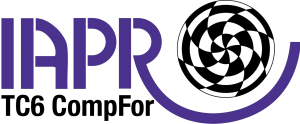The group promotes exchange and research in the field of Computational Forensics, mainly through:
- International forum, the IWCF workshops, to peer-review and exchange research results
- Performance evaluation, benchmarking and standardization of algorithms and computational procedures
- Resources in forms of data sets, software tools, and specifications e.g. data formats and system interfaces
- Education and training to prepare current and future researchers and practitioners
- Sources of information on events, related activities and financing opportunities
Forensic methods are widespread in the scientific disciplines: biology, chemistry, physics and medicine. One can categorize them into:
- Classical forensic identification sciences based on individualization (to identify a finger, a writer, a weapon, a shoe that left the mark)
- Practical-oriented disciplines based on classification and quantization (chemical, biological, medical, or physical methods) like forensic toxicology
Computational methods for application in the forensic sciences are studied under three perspectives:
- Providing tools to support the forensic examiner in his / her daily casework
- Establishing the scientific basis for a forensic discipline
- Representing human expert knowledge and for implementing recognition and reasoning abilities in machines
Algorithms and methods from several areas of pattern recognition and machine intelligence are involved:
- Signal processing / Image processing
- Computer vision
- Computer graphics
- Pattern recognition
- Data mining
- Robotics
- Machine learning
- Statistical Methods
Forensic sciences pose exceptional challenges for current pattern-recognition approaches
- Tiny pieces of evidence that are hidden in a chaotic environment, crime scene or scene of accident
- Study of specific properties (abnormalities)
- Demand of a (somehow) sufficient quality of trace evidence found
- Never identical traces, the limit/lack of appropriate reference samples
- Partial knowledge, required approximation
- Decision making under uncertainties & conjectures
More detailed information on the motivation and mission statement can be found in the Application for IAPR Technical Committee
